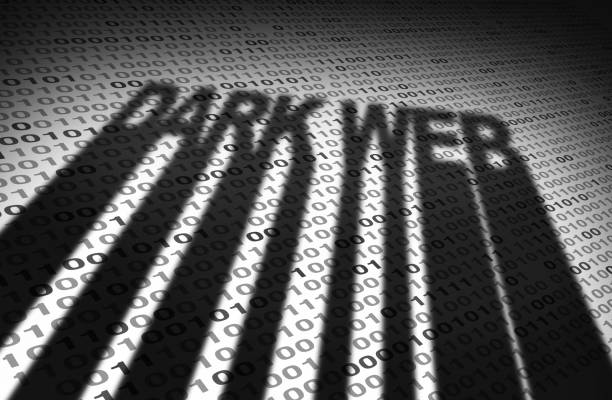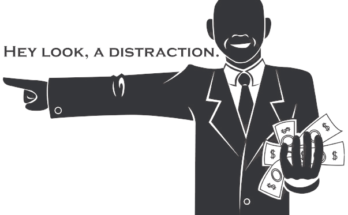The internet is a vast and seemingly endless land, but there’s a hidden underbelly that many have heard of but few truly understand – the Dark Web. It’s a term that often conjures images of illegal activities, anonymous hackers, and a digital underworld. In this article, we will unveil the mysteries of the Dark Web, exploring what it is, how it differs from the surface web, its hidden realities, and its genuine dangers. Whether you’re a curious internet user or concerned about cybersecurity, read on to reveal this secretive web side.
What is the Dark Web?
The Dark Web, often described as a hidden part of the internet, is a collection of websites and online spaces intentionally concealed from search engines and not indexed. This intentional obscurity is achieved through specialized software, such as Tor (The Onion Router), which anonymizes users and websites, making them difficult to trace.
Understanding the Layers of the Internet
Think of the internet as an iceberg to better comprehend the Dark Web. The surface web, which most of us are familiar with, is the tip of the iceberg visible above the water. It includes websites, online shopping, social media, and anything you can find through search engines like Google. The deep web is the submerged part of the iceberg, consisting of content not indexed by search engines, like subscription-based content, online banking, and email. The Dark Web, however, is the deepest and darkest layer, where anonymity and secrecy are paramount.
Deep Web vs. Dark Web
It’s essential to distinguish between the deep web and the dark web:
Dark Web: The dark web is a small portion of the deep web that is intentionally hidden and requires specific software like Tor to access. It is known for its anonymity, and while it has legitimate uses, it’s also a hub for illegal activities.
Deep Web: The deep web refers to web pages not indexed by search engines. It includes things like your email, online banking, and subscription-based content. These are hidden from search engine results but not necessarily illegal or dangerous.
Unmasking the Hidden Realities
1. Privacy and Anonymity
One of the key attractions of the Dark Web is its emphasis on privacy. Users often access it to protect their identity, communicate without being tracked, or access information under oppressive regimes. While these aspects can be beneficial, they also provide cover for illegal activities.
2. Marketplaces and Cryptocurrencies
The Dark Web is home to various online marketplaces where one can buy almost anything, including drugs, stolen data, counterfeit currencies, and hacking tools. Cryptocurrencies like Bitcoin are commonly used for transactions, offering a degree of anonymity.
3. Whistleblowers and Freedom of Speech
Some individuals use the Dark Web for whistleblowing and free speech in places where such actions can lead to persecution. Secure platforms on the Dark Web offer a space to reveal government secrets or voice dissent without fear of retribution.
4. Educational and Research Resources
Surprisingly, the Dark Web also hosts legitimate resources. Some academic institutions and researchers use it to share information without censorship. However, navigating this space can be challenging for the uninitiated.
The Dangers Lurking in the Shadows
The Dark Web is not just a place for privacy advocates or those needing a secure platform. It also harbors serious dangers.
1. Illegal Activities
The anonymity of the Dark Web is a double-edged sword. While it can protect users from government surveillance, it also facilitates illegal activities such as selling drugs, weapons, stolen data, and human trafficking.
2. Hacktivism and Cybercrime
Hacktivist groups and cybercriminals operate on the Dark Web. They launch attacks, distribute malware, and sell hacking services. These activities can have significant real-world consequences.
3. Scams and Fraud
Scams and fraud schemes abound. Users looking for a deal may fall victim to con artists selling non-existent products or services.
4. Psychological and Emotional Toll
Exposure to disturbing content on the Dark Web can have a lasting impact on users. Encounters with illegal or gruesome material can cause distress and trauma.
Navigating the Dark Web Safely
If you’re considering exploring the Dark Web out of curiosity or for legitimate reasons, it’s crucial to do so cautiously. Here are some tips:
1. Use Tor Securely
If you intend to access the Dark Web, use Tor securely. Avoid downloading files or revealing personal information while using the network.
2. Stay Informed
Be aware of the potential dangers. Research and understand the risks associated with different parts of the Dark Web.
3. Avoid Illegal Activities
Engaging in illegal activities, even unintentionally, can have legal consequences. Be mindful of the legal boundaries.
4. Keep Your Guard Up
Practice digital hygiene. Avoid downloading files from unverified sources and never share personal information.
The History of the Dark Web
The Dark Web has a fascinating history that dates back to the early days of the internet. It emerged as a space for anonymity and privacy. Here are some key milestones:
The concept of onion routing, the technology behind Tor, was developed by the U.S. Navy as a way to protect government communications. It later became the foundation for the Dark Web.
Tor, the software that enables anonymous communication, was developed and released to the public. This marked the beginning of the Dark Web as we know it today.
The infamous Silk Road, an online marketplace for illegal goods, became one of the Dark Web’s most well-known platforms. It used Bitcoin for transactions, making it harder to trace financial activities.
Over the years, the Dark Web evolved with new marketplaces, forums, and communication tools. Law enforcement agencies began targeting illegal activities on the Dark Web, leading to high-profile arrests and shutdowns.
Summary
The Dark Web remains a paradox, offering both opportunities for privacy and spaces for nefarious activities. Understanding its nature is crucial, whether you’re interested in safeguarding your online privacy or simply curious about this hidden world.
In a digital age where anonymity can empower both those seeking freedom of speech and those looking to exploit the vulnerable, it’s vital to navigate the Dark Web with caution and responsibility. Shedding light on its hidden realities and dangers enables us to make informed decisions about our online activities and contributions to a safer and more secure internet.
While the Dark Web is a subject of intrigue, it’s essential to remember that it’s not a place to be taken lightly. As you journey through the layers of the internet, consider the consequences of your choices and how they impact your online safety and the security of the digital world.




